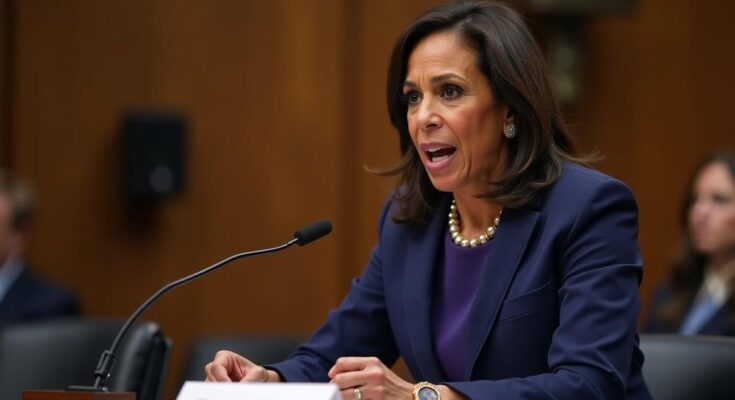Vice President Kamala Harris outlined her economic agenda in a recent interview, advocating for an “opportunity economy” focused on the middle class. Key proposals include a significant small business tax deduction, a national ban on price gouging for groceries, $25,000 in down payment assistance for first-time home buyers, and capping prescription drug costs. She intends to expand the Earned Income Tax Credit and eliminate taxes on tips for service workers while emphasizing her belief in congressional support for her initiatives.
In a recent candid interview on “60 Minutes,” Vice President Kamala Harris passionately articulated her economic vision, asserting that Congress would be inclined to back her ambitious agenda aimed at fostering what she calls an “opportunity economy” for the middle class. This strategy encompasses a robust array of initiatives such as significantly reducing grocery and prescription drug prices, along with tackling the pervasive housing crisis. Harris spotlighted a proposed $50,000 tax deduction for new small businesses and set an audacious goal of generating 25 million new applications for small business licenses within the first two years of her potential presidency. Harris’s plan includes aggressive measures to stave off price gouging by food companies, which she aims to target through the Federal Trade Commission’s enhanced powers. Furthermore, she proposes giving first-time home buyers $25,000 in down payment assistance and facilitating the construction of three million new housing units within a four-year framework to address the escalating housing affordability crisis. Among other initiatives, she has launched a tax credit for newborns and pledged to restore pandemic-era child tax credits for working families. In her quest for fiscal equity, Harris seeks to expand the Earned Income Tax Credit and proposed eliminating taxes on tips for service workers in a bid to elevate their earnings. Additionally, the ambitious vice president has visions of capping insulin prices at $35 and reducing out-of-pocket costs on prescription drugs to $2,000 per year, reigniting negotiations with pharmaceutical companies to ensure that life-saving medications are within reach for all. With a heart for healthcare, she plans to tackle medical debt and enhance subsidies for Affordable Care Act plans, which could yield significant savings for many families. Although specifics on paid leave and minimum wage raises are still forthcoming, Harris’s campaign has emphasized the need for supporting the middle class with substantial reforms. Amid the backdrop of Congress’s apprehension, Harris argues for an optimistic, collaborative approach, believing that Congress will recognize the value of her proposals amid increasing awareness of the economic impact of the Trump tax cuts on the federal deficit. Harris solidifies her capitalist stance amidst political adversities, pledging to maintain the independence of the Federal Reserve. The vice president positioned herself efficaciously within her party, as her proposals resonate closely with President Joe Biden’s platforms, albeit with her distinct emphasis on certain issues like child tax credits. However, her strategic vagueness in some economic plans invites scrutiny, with her camp believing it would mitigate potential criticisms, steering support from a broader array of business communities.
The topic revolves around Vice President Kamala Harris’s economic agenda, primarily constituted of measures intended to bolster the middle class and stimulate small business growth. As Harris positions herself as a frontrunner in the presidential race following President Biden’s withdrawal, detailed plans to address core economic concerns for Americans become crucial, especially with inflation being a critical election issue. Harris’s propositions span across various domains including small business tax credits, pricing regulations in food and pharmaceutical sectors, housing affordability, and child tax credits, each designed to alleviate the financial strain on everyday families. Her agenda aims to resonate with the electorate while defending her approach against criticisms regarding past economic policies and the legislative willingness of Congress.
In conclusion, Kamala Harris’s economic agenda is a multi-faceted approach aimed at revitalizing the middle class through targeted financial assistance, stringent market regulations, and a call for greater equity within taxation. By emphasizing collaboration with Congress and maintaining a distinctly capitalist ideology, Harris seeks to carve out her niche in the political landscape, aligning her vision closely with the priorities of many American families. As she prepares to navigate the complexities of congressional support, her ambitious plans shine a light on the economic challenges that lie ahead.
Original Source: www.forbes.com



